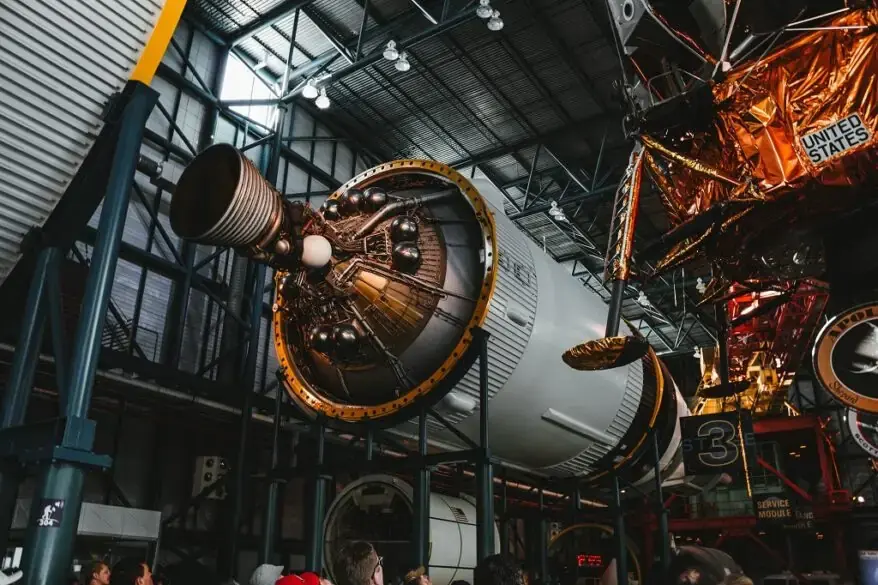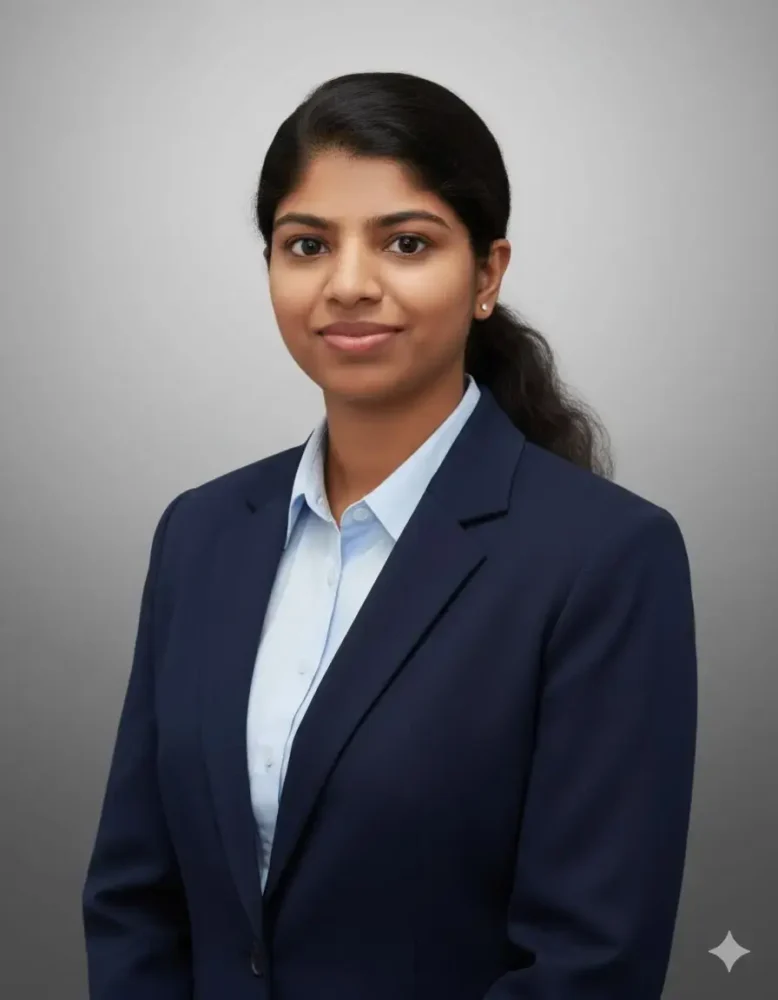From Ground to Orbit: What YOU Will LEARN in the Aerospace Engineering Course
Aerospace engineering is a specialized field. Many potential students do not know its scope. Unlike other courses, the opportunities in aerospace are not widely known. This can leave students unsure about career paths and possibilities. This article aims to fill that knowledge gap. It helps students understand aerospace engineering better. It guides them in choosing the right direction for their future. The article gives an overview of the four-year course. It provides a breakdown of the core subjects. These subjects are aerodynamics, aerospace propulsion, aerospace structures, and flight mechanics and control. It also covers specializations.

Gaining practical experience is important to becoming a skilled professional. This article aims to provide a clear picture of the course. It shows job opportunities in aerospace engineering. It helps students find a path that suits their interests and goals.
What is Aerospace Engineering?

Aerospace engineering is about designing and building aircraft and spacecraft. Imagine building rockets! This field combines creativity with science. Teens who love math and physics will thrive. But it’s not just about numbers. It’s about dreaming big. The excitement of launching a rocket is palpable. Boom! The thrill is unmatched.
Educational paths are varied. Many universities offer programs in aerospace engineering. They teach the basics. Students learn about aerodynamics, propulsion, and materials. It’s challenging but rewarding.
Also Read: Rockets or Projectiles: How Do You Build One?
Introduction
Undergraduate courses in Space Science and Technology
There are three main undergraduate courses in Space Science and Technology. These are Aerospace Engineering, Aeronautical Engineering, and Aircraft Maintenance Engineering (AME). This article focuses on aerospace and aeronautical engineering.
Aeronautical engineering focuses on vehicles that move within the Earth’s atmosphere. These vehicles include airplanes and helicopters. This field involves the design, construction, and upkeep of these vehicles.

Aerospace engineering includes more space-related subjects and specialized labs. Aerospace engineering is a broader field. It includes everything in aeronautical engineering. However, it also covers space vehicles. These are vehicles like rockets, satellites, and spacecraft. They operate outside of Earth’s atmosphere.
Core subjects of Aerospace Engineering Course
First Year
Students need to complete basic courses in their first year of engineering. These courses include engineering mathematics, engineering physics, and engineering chemistry. Students also study basic electrical and electronics engineering. In addition, they learn programming languages such as C, Python, and Java. Every engineering discipline includes these standard courses.
Second Year Onwards
Beginning in their second year, students specializing in Aerospace Engineering Course begin to focus on the four core areas.
- Aerodynamics
- Aerospace Structures
- Aerospace Propulsion
- Flight Mechanics and Control

Aerodynamics refers to the study of how air flows around objects, particularly aircraft and spacecraft. It helps engineers design how vehicles can fly smoothly, improve fuel efficiency, reduce drag, and increase lift.

Aerospace structures are about design and building. They focus on making strong and large parts. These parts can handle forces without breaking. At the same time, they must be light.

Propulsion refers to the action or process of pushing or pulling to drive an object forward. Aerospace Propulsion deals with the study of how to propel aircraft and spacecraft. This includes jet engines for planes and rocket engines for spacecraft.

The study of flight mechanics and control looks at the forces on an aircraft or spacecraft. These forces affect how stable and well it performs in the air and in space. Engineers design cockpit control systems to help pilots or autopilots. These systems help keep the vehicle steady. They also help in maneuvering the aircraft and ensuring it flies smoothly.
The following table outlines specific topics within core areas of an aerospace engineering course
| Aerodynamics | Introduction to Aerospace Engineering Overview of the field, covers basic aerodynamic concepts Fluid Mechanics The foundation for comprehending airflow, essential for studying aerodynamics Aerodynamics Branch of physics that deals with the movement of air and the forces that result from the interaction of air with solid objects used in aircraft, such as wings Aircraft Performance Application of aerodynamic principles to assess and improve flight performance Viscous Flows Advanced topic focusing on the effects of viscosity in aerodynamic flows Fluid Dynamics To understand the behavior of fluids under various conditions and their types Aerodynamics Lab To study the behavior of airflow and pressure distributions over objects though a wind tunnel |
| Aerospace Structures | Material Science and Metallurgy Study of materials used in aerospace structures Strength of Materials Fundamentals of stress, strain, and material behavior under loads Theory of Mechanisms Basic principles of mechanisms and machine design Aircraft Structures -1 and 2 It involves design, analysis and testing of the structural members of an aircraft so that they can resist the loads they experience during flight Composite Materials and Structures The study of materials used in aerospace applications, emphasizing the selection and testing of materials that can withstand extreme conditions Finite Element Analysis Numerical method for analyzing complex structural components Aero Elasticity Study of the interaction between aerodynamic forces and structural elasticity Aerospace Drawing Lab Design software like CATIA, AutoCAD, Fusion 360, etc. is used to create several mechanical and aerospace models Material Testing Lab Tests are performed to determine the hardness, strength and durability of several materials MATLAB Lab Creation and mathematical models and to run simulations to solve complex aerospace problems Computational Lab Ansys, Fluent and Abaqus are taught for simulations in aerodynamics, structures, and thermal analysis Aircraft Structures Lab Concepts like shear center are studied, and the aircraft components are tested for strength and stability |
| Aerospace Propulsion | Thermodynamics Basic principles of energy transfer, critical for understanding propulsion Heat and Mass Transfer It involves the study of energy transfer, heat flow, and the thermodynamic principles that are critical in the design of engines and thermal systems Gas Dynamics Understanding high-speed flows, which is crucial for propulsion systems Aircraft Propulsion Detailed study of jet engines and other aircraft propulsion systems Rocket Propulsion Focuses on propulsion systems used in spacecraft, rockets, and other advanced propulsion systems such as electrical, nuclear rockets and solar sails Thermodynamics Lab It provides experimental exposure to heat exchangers, piston engines, heat transfer properties of different materials, the operation of air conditioners and refrigerators, specific heat, and fuel combustion heat Aircraft Propulsion Lab Focuses on several engines, study of free and wall jet setup, free and forced convection, combustors, and propeller tests Heat and Mass Transfer Lab Focuses on concepts like conduction, convection and different types of heat exchangers |
| Flight Mechanics and Control | Space Mechanics Focuses on the motion and control of spacecraft, including orbit dynamics, attitude control, and navigation in space Vibrations Study of oscillatory motion, important for analyzing aircraft stability and control Control Engineering Study of systems control, essential for maintaining flight stability and performance Avionics Deals with the electronic systems used in aircraft, including navigation, communication, and control systems, as well as the integration of various subsystems Control Engineering Lab Explores systems that control and maintain the flight stability with control systems |
Experiential Learning through Project
During the eighth semester, students are required to complete a final year project. Students can either complete this full-time in college or in collaboration with the industry.
In most cases, an aerospace engineering course groups the core subjects and offers them on a semester basis. This structure enables one to systematically learn to succeed. The first and second semesters begin with relatively basic information, while subsequent semesters progress toward more specialized information.
The following table outlines semester-wise subjects of an aerospace engineering course
| Semester I | Engineering Mathematics I Engineering Physics I Engineering Chemistry I Technical English Problem-Solving using C Basics of Mechanical Engineering Basics of Civil Engineering Environmental Engineering Engineering Physics Laboratory Basic Engineering Workshop |
| Semester II | Engineering Mathematics II Engineering Physics II Engineering Chemistry II Career Development Program – I Problem-Solving Using Python Basics of Electrical Engineering Engineering Graphics Basics of Electronics Engineering Engineering Chemistry Laboratory Electrical and Electronics Laboratory |
| Semester III | Engineering Mathematics III Introduction to Aerospace Engineering Fluid Mechanics Material Science and Metallurgy Strength of Materials Thermodynamics Fluid Mechanics Laboratory Machine Drawing Laboratory Career Development Program II |
| Semester IV | Engineering Mathematics IV Space Mechanics Aerodynamics Theory of Mechanisms Heat and Mass Transfer Aerodynamics Laboratory Material Testing Laboratory Career Development Program III |
| Semester V | Aircraft Performance Gas Dynamics Composite Materials and Structures Aircraft Structures I Aircraft Propulsion Modelling and Simulation using Simulink Propulsion Laboratory Career Development Program IV Design Thinking I |
| Semester VI | Aircraft Stability and Control / Spacecraft Stability and Control Finite Element Analysis / Viscous Flows Aircraft Structures II Rocket Propulsion Vibrations Professional Ethics and Constitution of India Aircraft Structures Laboratory Finite Element Analysis Laboratory Career Development Program V Design Thinking II |
| Semester VII | Aircraft Navigation and Guidance / Spacecraft Navigation and Guidance Control Engineering Aircraft Design / Spacecraft Design Aero Elasticity Intellectual Property Rights Control Engineering Laboratory Industry Internship Design Thinking III |
| Semester VIII | Project Work Entrepreneurship Management |
Subjects for Specialization
In the third semester, students can choose a subject that broadens their knowledge and improves their interdisciplinary training. The student can choose to focus on specialized areas of aerospace engineering like structures, avionics, or propulsion.

This lets the student learn more about a specific part of aerospace engineering. This opportunity enhances the learning processes of students by providing them with co-curricular exposures that extend beyond the conventional curriculum specializations.
Following are some of the key electives offered in the Aerospace Engineering Course.
- Digital Signal Processing
- Introduction to Avionics
- Control System Engineering
- Aircraft Navigation Systems
- Radar Technology
- Satellite Communication
- Avionics System Design
- Theory of Elasticity
- Finite Element Analysis
- Composite Material and Structures
- Fatigue and Fracture
- Advanced Materials
- Aircraft Design
- Vibrations and Aeroelasticity
The courses might look different at different places. Students have the option to pursue flexible programs by pursuing the listed electives as major subjects at certain educational institutions, while others may make them optional. This allows institutions to tailor the curriculum to match the college’s niche or student demands.
Career Opportunities
Career opportunities are vast. Aerospace engineers work on planes, helicopters, and satellites. They innovate. They solve problems. Every day is a new challenge. The global demand for these engineers is growing. They are needed everywhere. From the U.S. to Japan. Opportunities are endless.

The field is not just for men. Women are soaring high too. Many female engineers are making waves. They inspire others. Their stories are powerful. “The sky is not the limit. It’s just the beginning,” said Amelia Earhart. Her words resonate. They motivate young girls to pursue their dreams.
Closing Remarks
Aerospace engineering is more than a career. It’s a passion and pushing boundaries. It’s about exploring the unknown. The universe is vast. There’s so much to discover. Every star is a possibility. The night sky is a canvas. Paint it with dreams.

Technology is advancing fast. Drones, electric planes, and space tourism are the future. Aerospace engineers are at the forefront. They shape the future. They are innovators. The possibilities are endless. The future is bright.
Challenges exist. The field is competitive. It requires dedication. But the rewards are worth it. The satisfaction of seeing a project take flight is immense. It’s a feeling like no other. It’s magical. The journey is worth every step.
In conclusion, aerospace engineering is a field of endless opportunities. It’s a world where dreams take flight. For teens with a passion for science and exploration, it’s the perfect path. The sky is not the limit. It’s just the beginning. So, spread your wings and soar. The universe awaits.
To stay updated with the latest developments in STEM research, visit ENTECH Online. This is our digital magazine for science, technology, engineering, and mathematics.
At ENTECH Online, you’ll find a wealth of information. We offer insights and resources to fuel your curiosity. Our goal is to inspire your passion for new scientific discoveries.
Disclaimer: This article is not intended to provide professional or technical, or medical advice. Please consult a healthcare professional before making any changes to your diet or lifestyle. AI-generated images are used only for illustration and decoration. Their accuracy, quality, and appropriateness can differ. Users should avoid making decisions or assumptions based only on the text and images.







